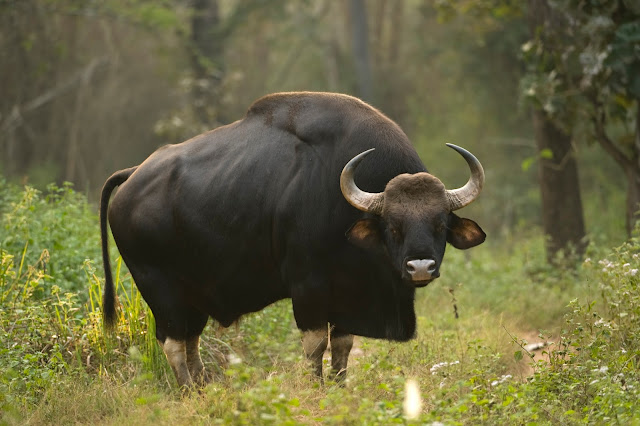Mysterious Big Cat- The Snow Leopard
Now let's go to find out the most shy and rare to see big cat.
"Mysterious Big Cat- The Snow leopard"
Basic Facts about snow leopard
- The snow leopard, known for its beautiful, thick fur, has a white, yellowish or soft gray coat with ringed spots of black or brown.
- The markings help camouflage it from prey.
- With their thick coats, heavy fur-lined tails and paws covered with fur, snow leopards are perfectly adapted to the cold and dry habitats in which they live.
Physical Characteristics
- Snow leopards are slightly smaller than the other big cats.
- Snow leopard weight is generally between 27 and 55 kg, with occasional large male reaching 75 kg and small female under 25 kg.
- They have a relatively short body, measuring in length from the head to the base of the tail 75 to 150 cm. However , the tail is quite long, as 80 to 100 cm.
- They are stocky and short-legged big cats , standing about 60 cm at the shoulder.
- The snow leopard has a short muzzle and domed forehead, containing unusually large nasal cavities that help the animal breathe the thin, cold air of mountainous environment.
Did you know?
- Snow leopards have very large paws that act as snowshoes and keep them from sinking into the snow. Their paws are also completely fur-covered , protecting them from the cold.
- Snow leopards have light green or gray eyes, unusual from big cats, who usually have yellow or gold eyes.
Population
- Total wild population of the snow leopard was estimated at 4,510 to 7,350 individuals. Many of these estimates are rough and outdated.
- An estimate from 2016, using data from a number of studies, proposed a population of 4,700 to 8,700 individuals across only 32 percent of the species rang , suggesting that the total number of snow leopards was larger than previous thought.
- In India total estimated population of snow leopard is around 200 to 600.
- China has the most number of snow leopards that is around 2,000 to 2,500.
Protected areas in India
- Hemis National Park, in Ladakh, Jammu and Kashmir.
- Nanda Devi National Park, Uttarakhand, a UNESCO national World Heritage site.
- Valley of Flowers National Park, Uttarakhand, a UNESCO national World Heritage site.
- Dibang Wildlife Sanctuary, near Anini.
- Kibber Wildlife Sanctuary, Lahaul Spiti, Himachal Pradesh.
- Pin Valley National Park, Lahaul Spiti, Himachal Pradesh.
- Great Himalayan National Park, Kullu, Himachal Pradesh.
Snow Leopard Food
- Their common prey include gazelles, deer, wild goats, sheep, snow cocks, pikas, rodents like hares, mice and rabbits, bobak, and wild boars.
- Ones that live in the Himalayan mountain ranges mainly feed on the bharals also known as the Himalayan Blue Sheep.
- In winter, when large herds of herbivores migrate to warmer places with rich pastures, the snow leopard may encroach on corrals and kill off all the domestic animals in one go.
- In average twice in a month, they may hunt large mammals and feed of their flesh for several days.
- After hunting down an animal, some drag their food into snow tunnels for storage and safe keeping.
- Goats and sheep are heir common prey. They eat slowly and a kill may last for 2 to 3 days.
Reproduction
- Snow leopard mating season is between January and Mid-March. Their gestation period is about three to three and half months.
- A female searches for well sheltered rock crevices as convenient and safe location for giving birth without having to be alter all the time in case of any possible danger.
- An average female gives birth to a little consisting 1 to 5 cubs. The cubs do not open their eyes until they are 7 days old.
- The young cubs live with their mothers until two years of age, which is the same time they eat solid food. During the time spent with their mothers, cubs learn how to hunt down prey and their mothers teach them handy hunting skills for survival.
Conservation of Snow Leopard
- Numerous agencies are working to conserve the snow leopard and its threatened mountain ecosystems. These include the Snow Leopard Trust, the Snow Leopard Conservancy, the Snow leopard Network, the Cat Specialist Group and the Panthera Corporation.
- These group and various national governments from the snow leopard's range, non-profits, donors from around the world worked together at the 10th international Snow leopard Conference in Beijing.
- Their focus on research, community programs in snow leopard regions and education programs are aimed at understanding the cat's need, as well as the needs of the villagers and herder communities juxtaposed with the snow leopard's habitats.







Comments
Post a Comment